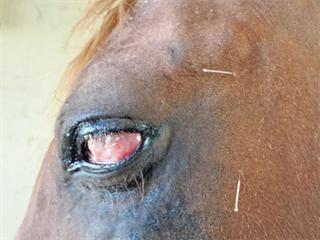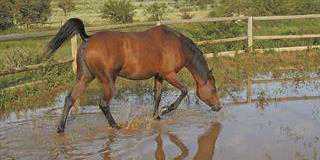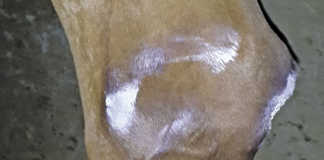
Most eye problems in horses arise when dust or other foreign matter enters the eye and damages the cornea. A secondary infection then arises that can be either bacterial or fungal. Placing a teff net too high is the most common cause of eye problems. If the net is above eye-level, the seeds can fall into the horse’s eye, where their constant scratching can cause irritation and even blindness.
When empty, the bottom of the net must be off the ground, so the horse does not get tangled up. The tie-up point should be at eye level. It’s best to loop the long string of the net through a hook on the wall and then through the base of the net.
Alternatively, use hay bars. These are at the ideal height, thus preventing eye infections and encouraging a natural grazing position. They also save labour, as the hay stays in one place. A second cause of eye problems is scratching by eyelashes from turned-in eyelids, or by wire used to repair eye blinkers. Both cases can lead to severe eye infection, an abscess and blindness. Blindness can also result from a viral herpes infection or the occasional stomach worm. Very rarely, cancerous cells may invade the skin around the eye.
Symptoms
Chronic infection of the cornea results in a blue-white colouration of the eye. Get in touch with your vet if there are any signs of pain, excessive tear flow, light sensitivity, eyelid swelling or ulceration. Early investigation of growths around the eye mean a better chance of healing. A fluorescein test will determine whether the surface of the cornea has ulcerated.
You can deal with a foreign object by using clean castor oil to float it to the surface so that it can be removed from the eye. Make a herbal wash from calendula, hypericum and rescue remedy and apply to the outside of the eye to help sooth sore and swollen eyes and minor infections. The dilution of the calendula and hypercium should be one in 10 and applied three times a day until an improvement is seen. Your vet may also recommend an antibacterial eye ointment.













